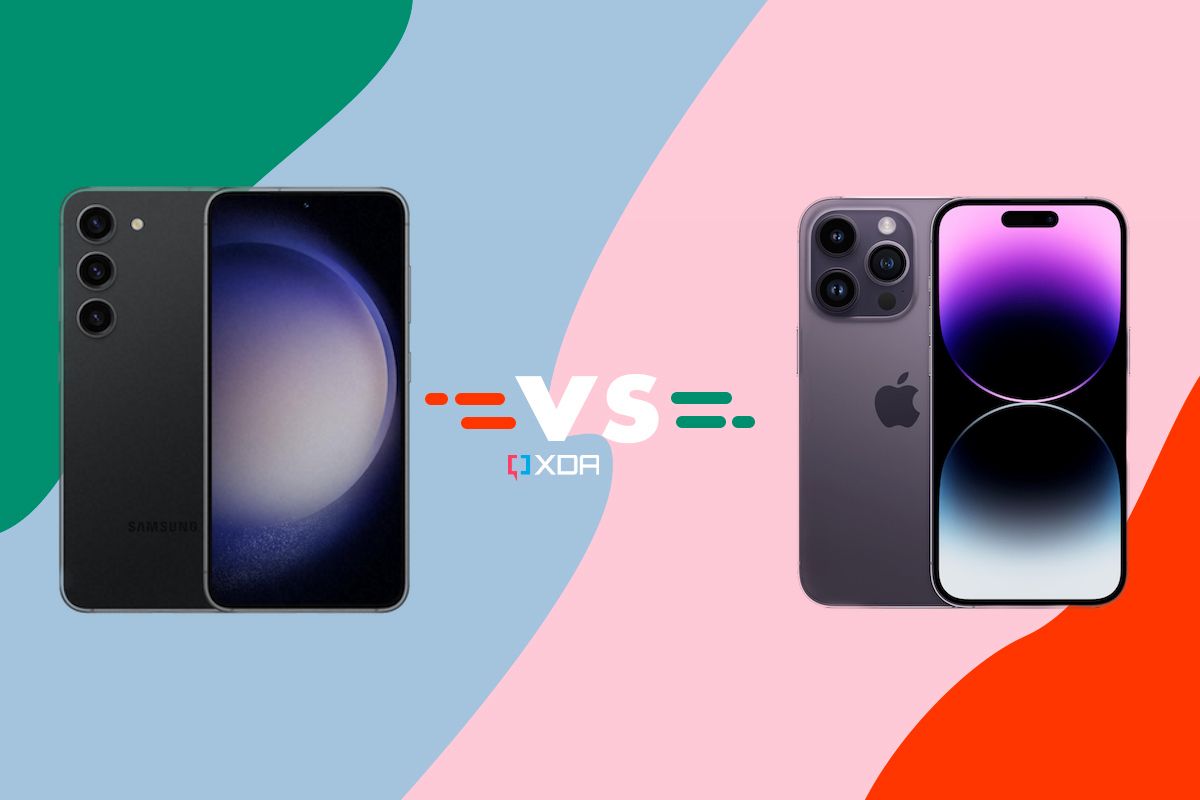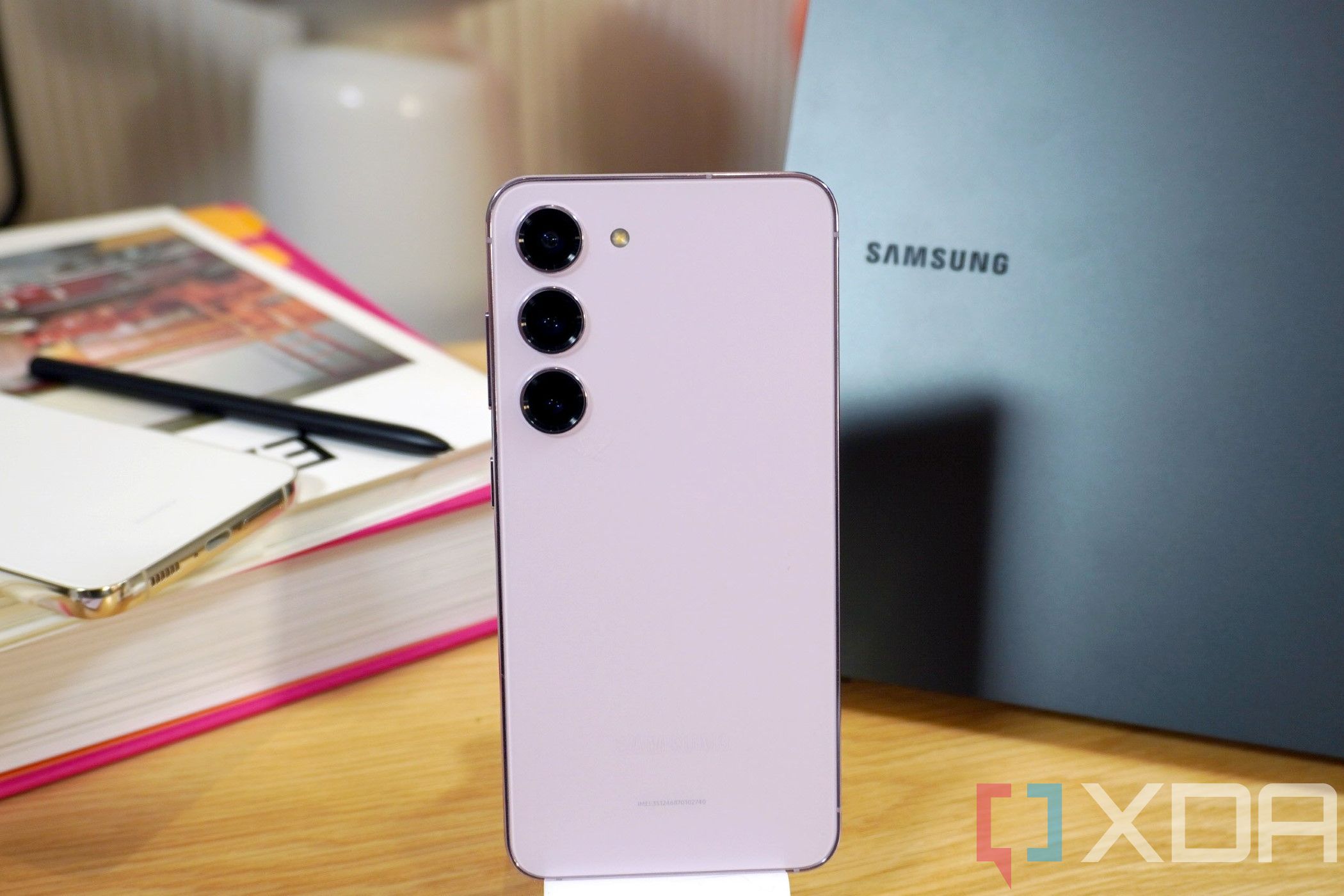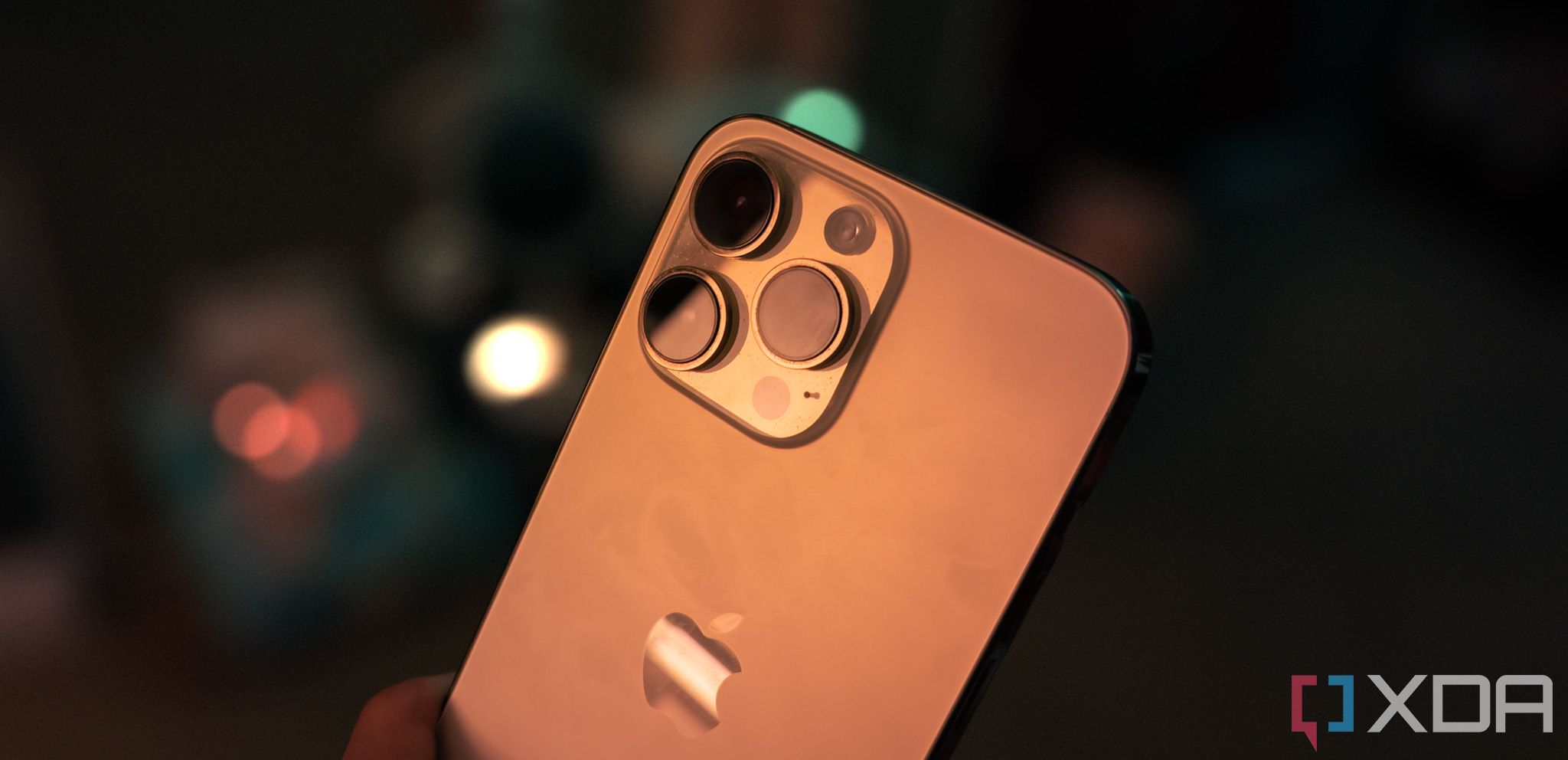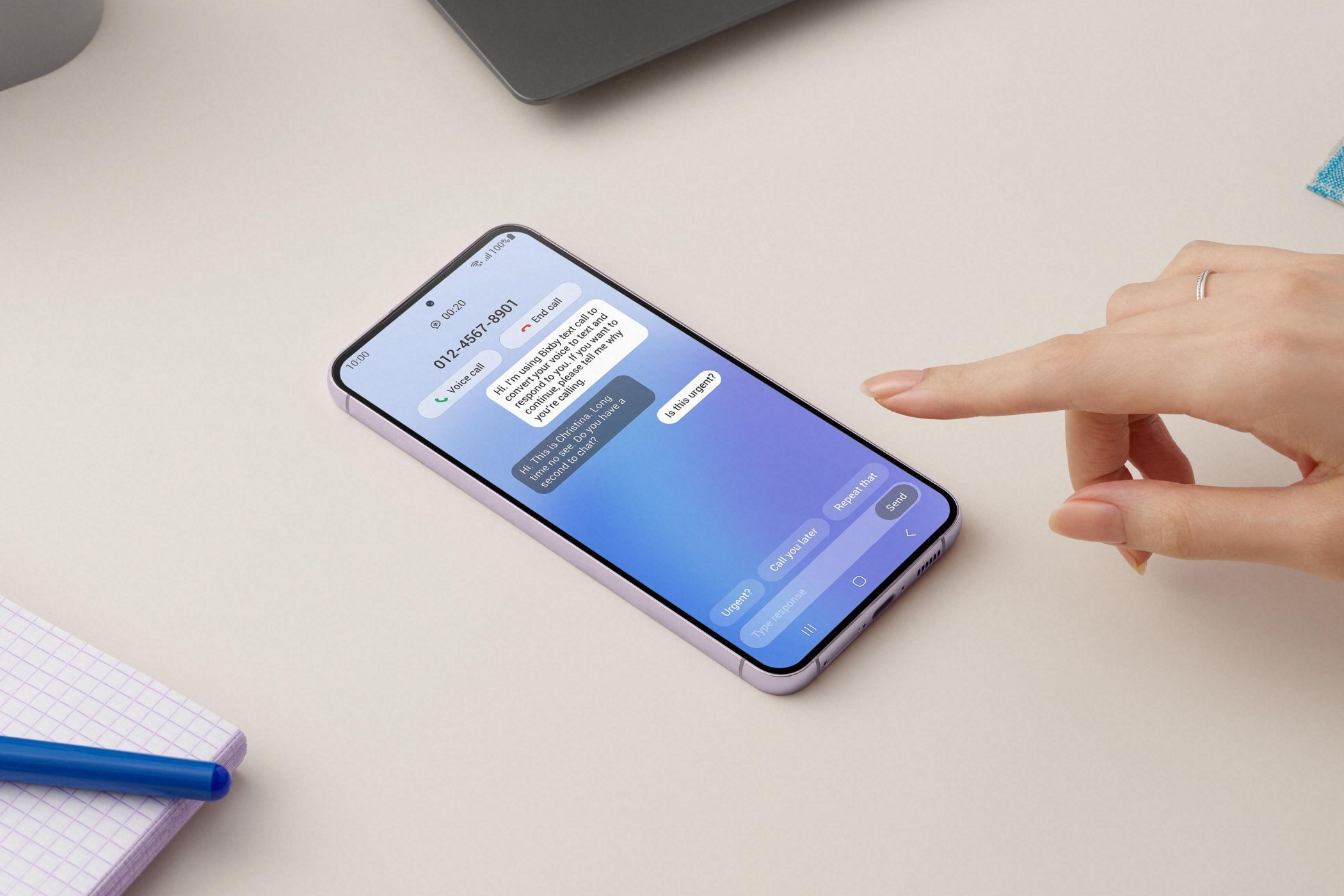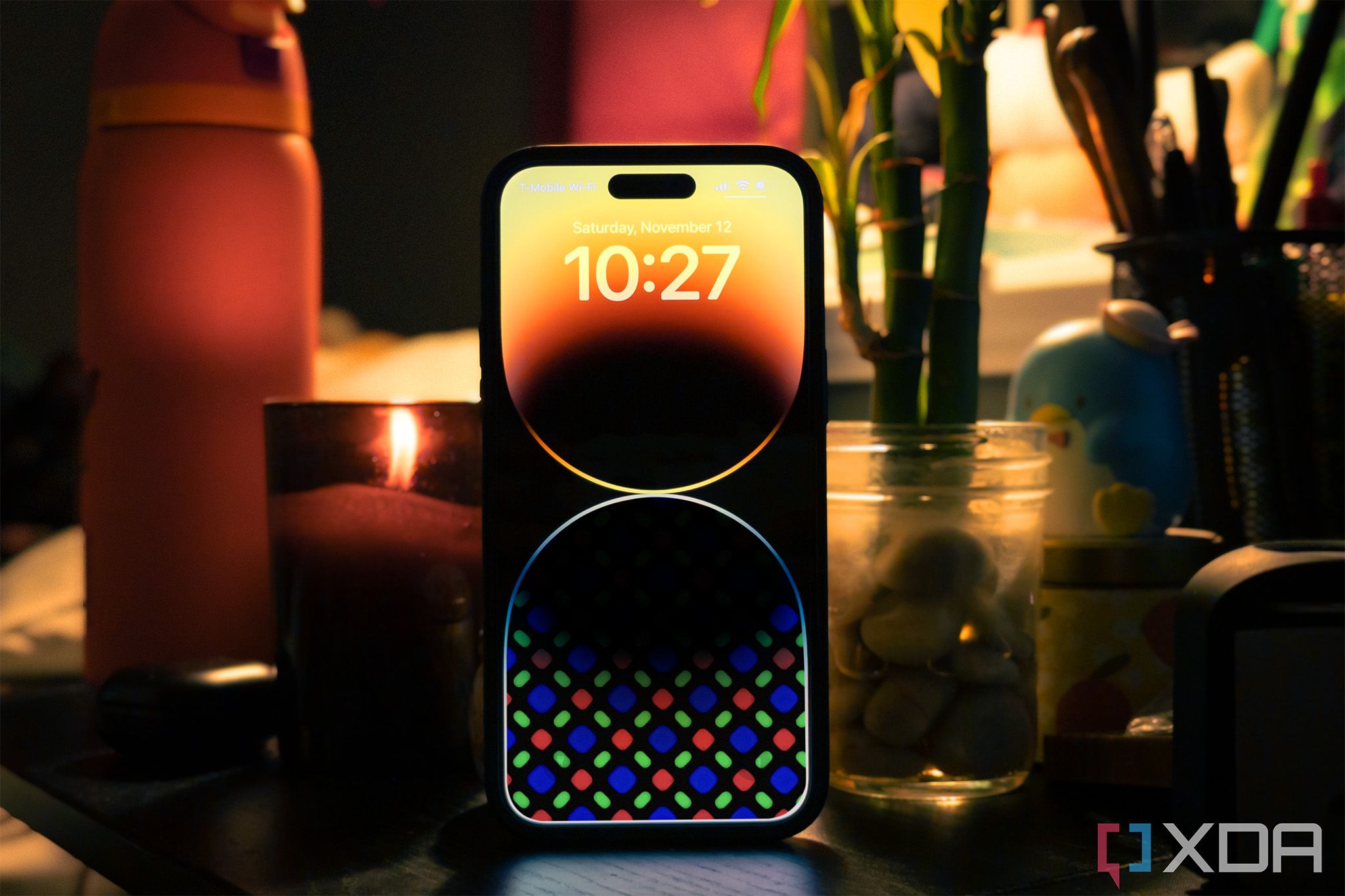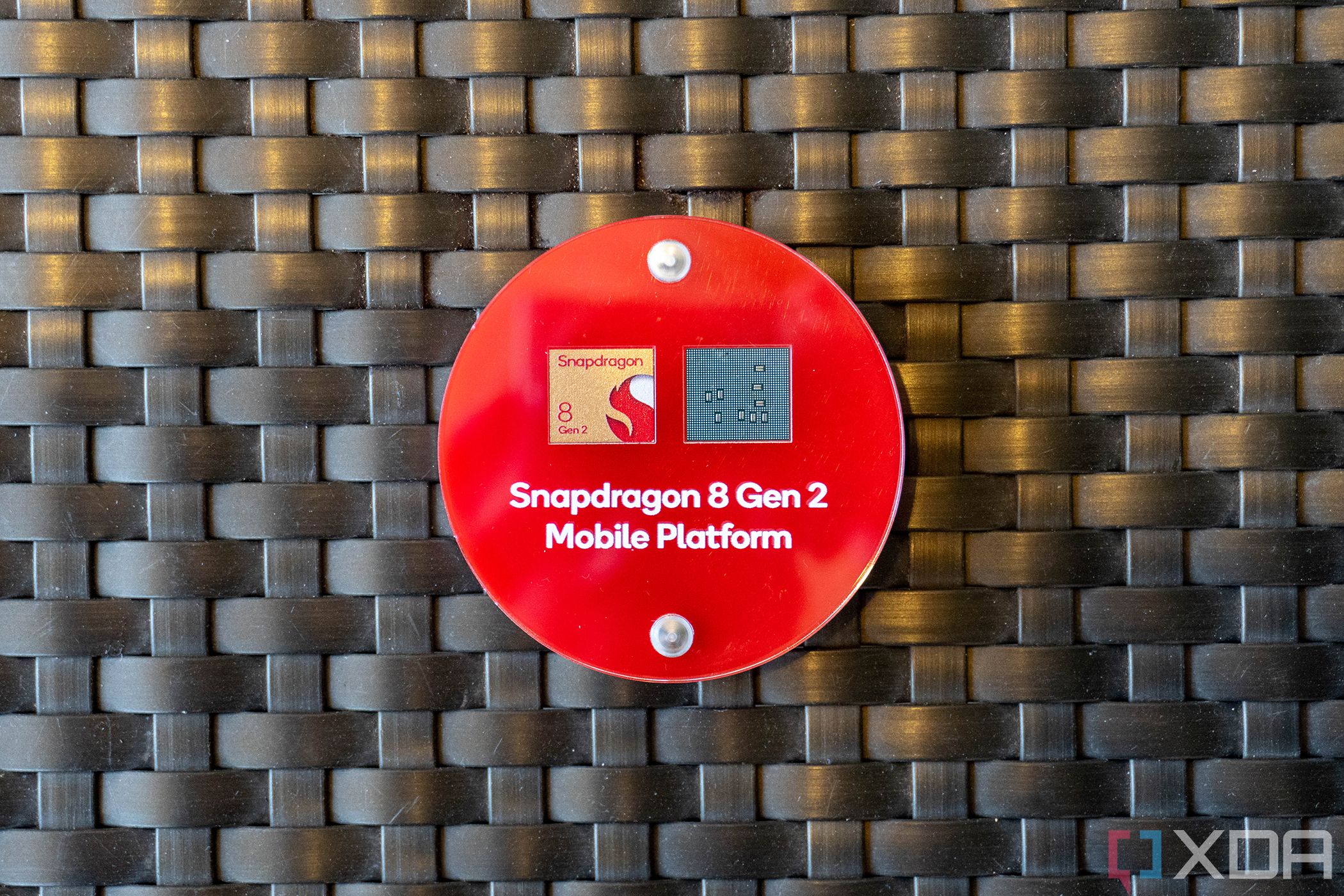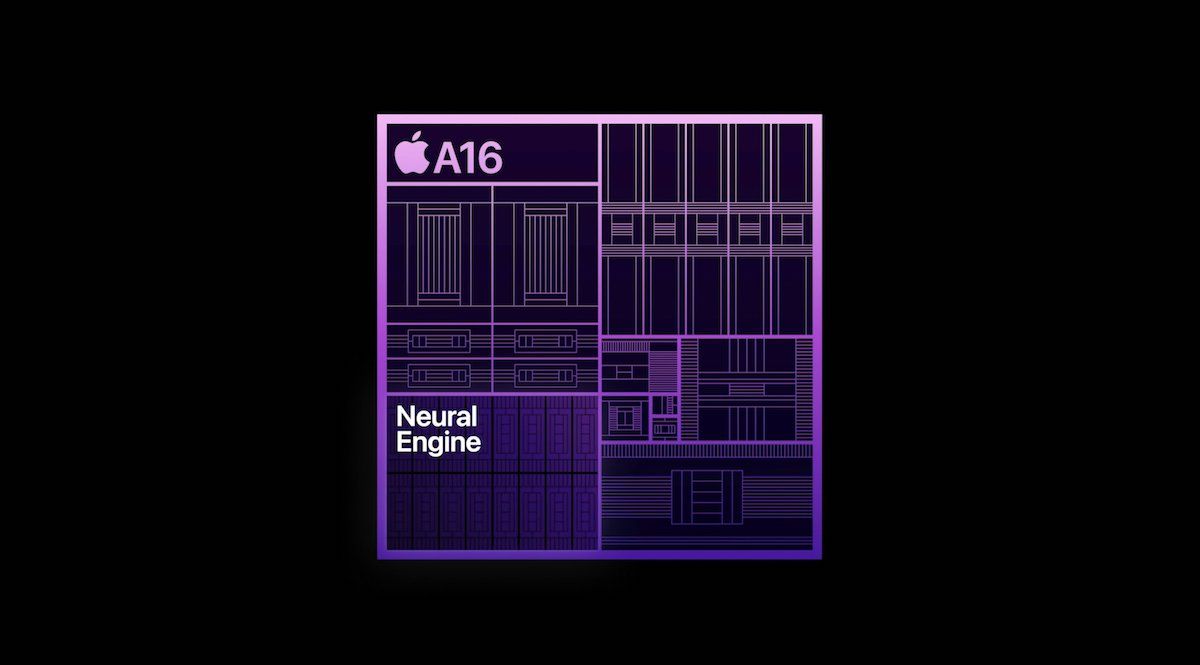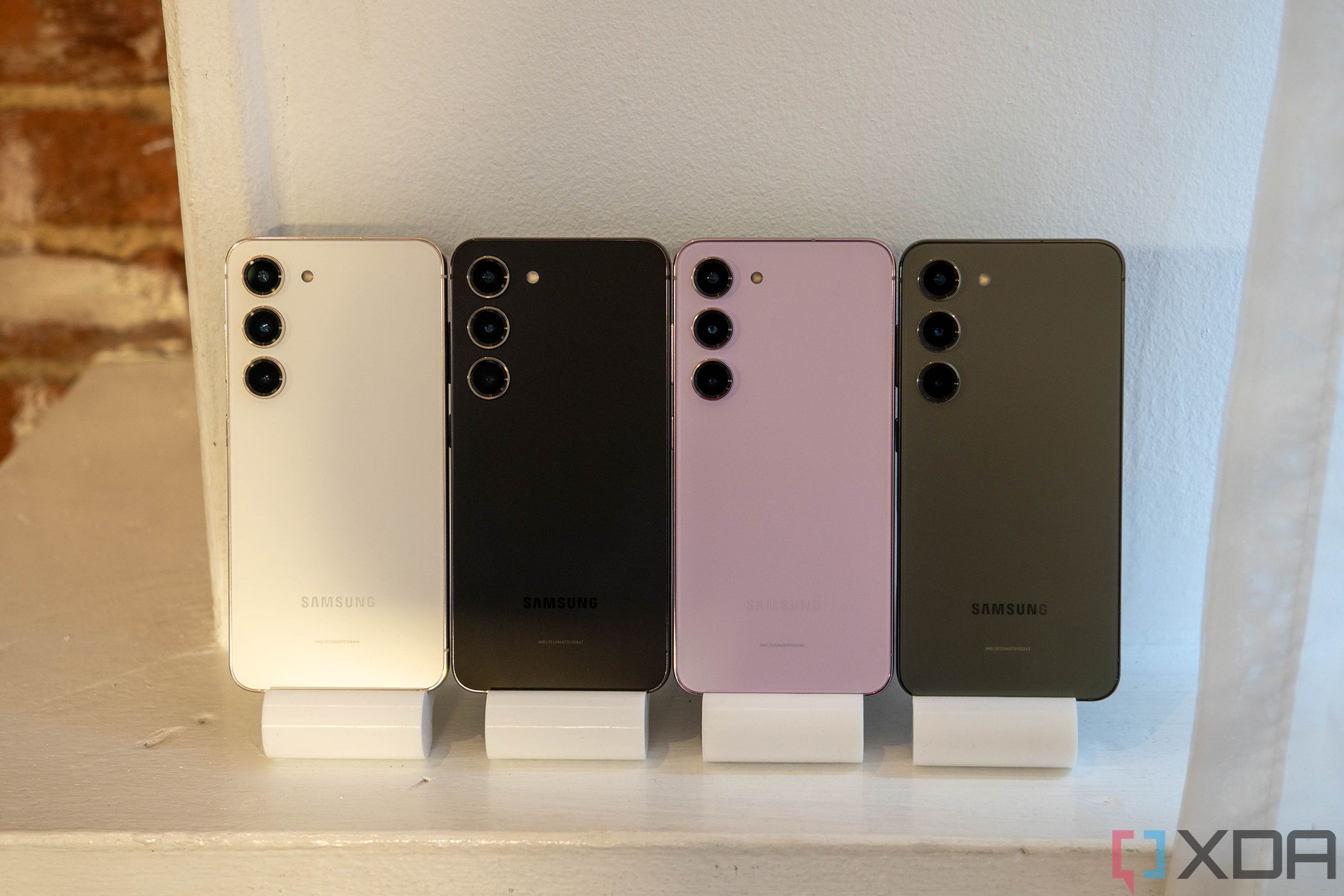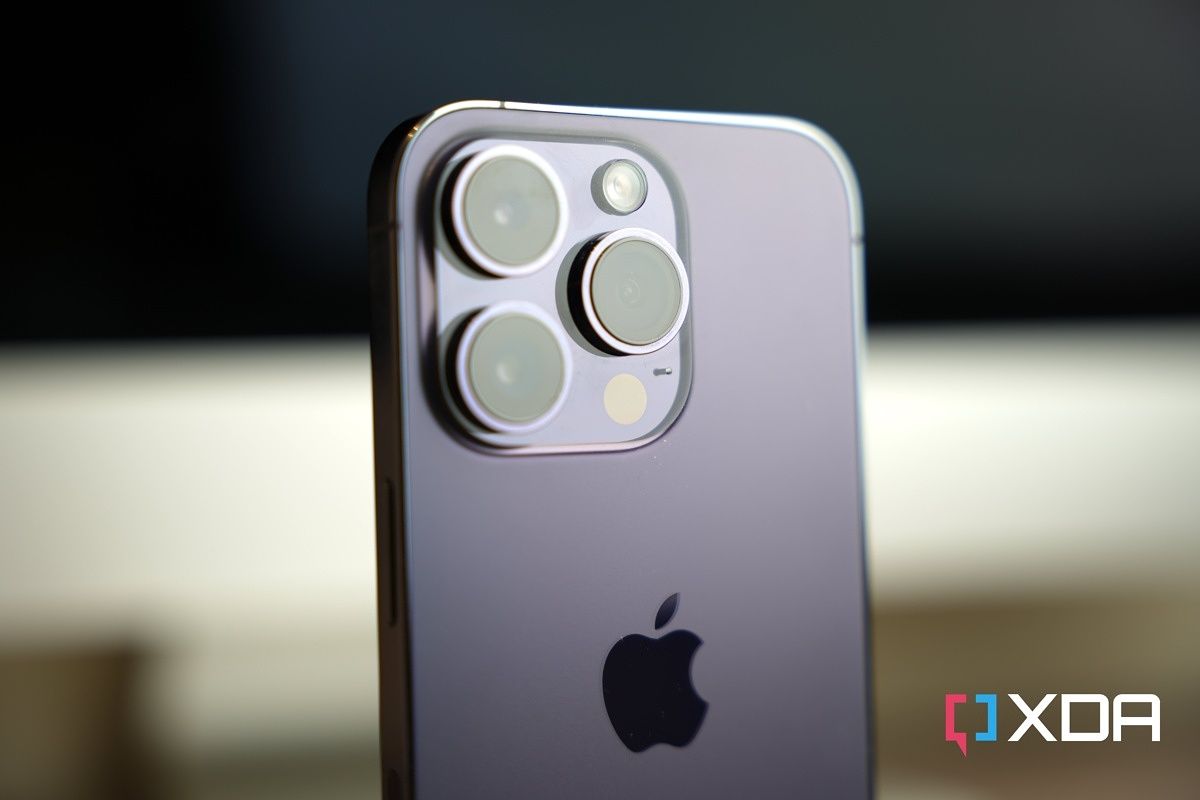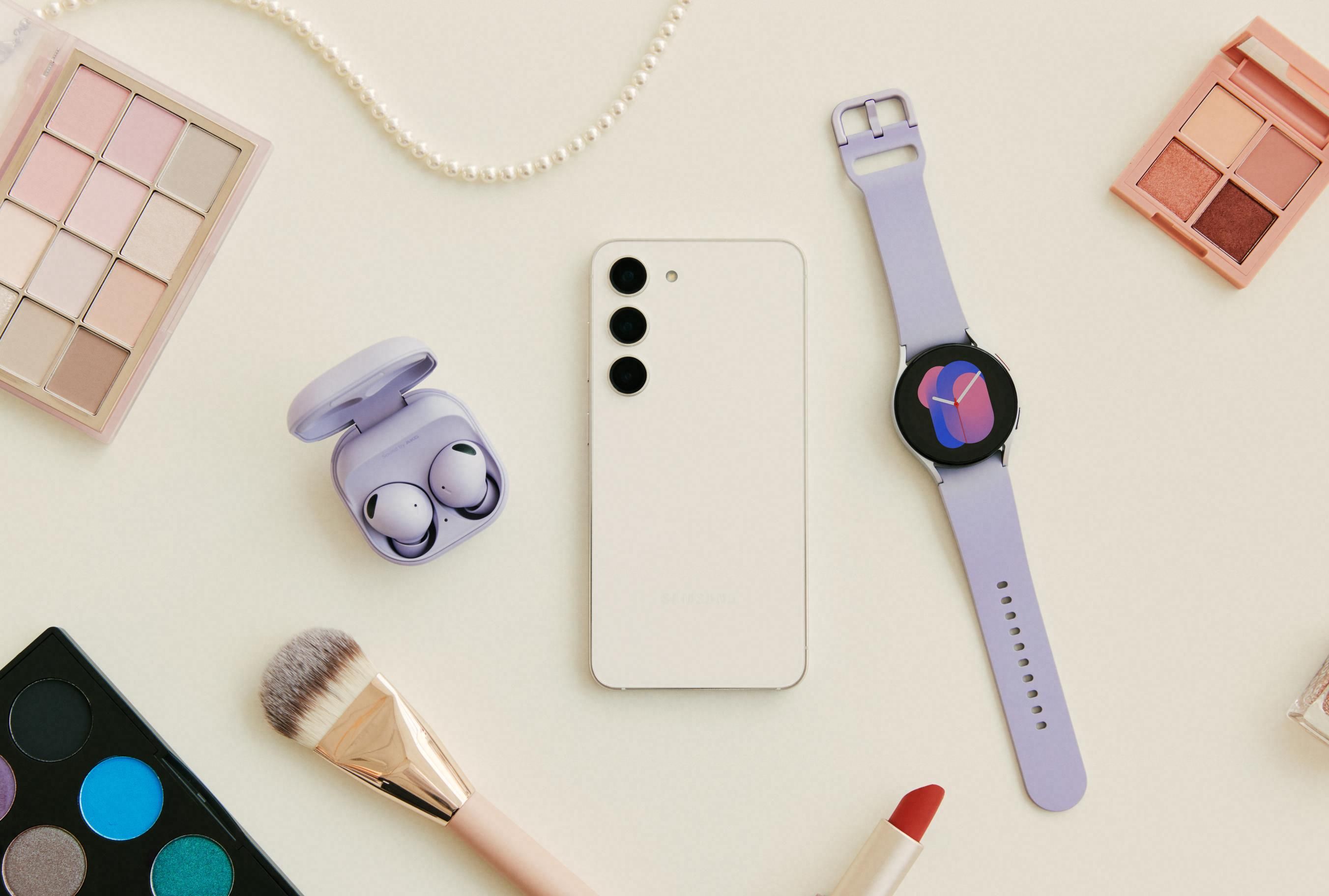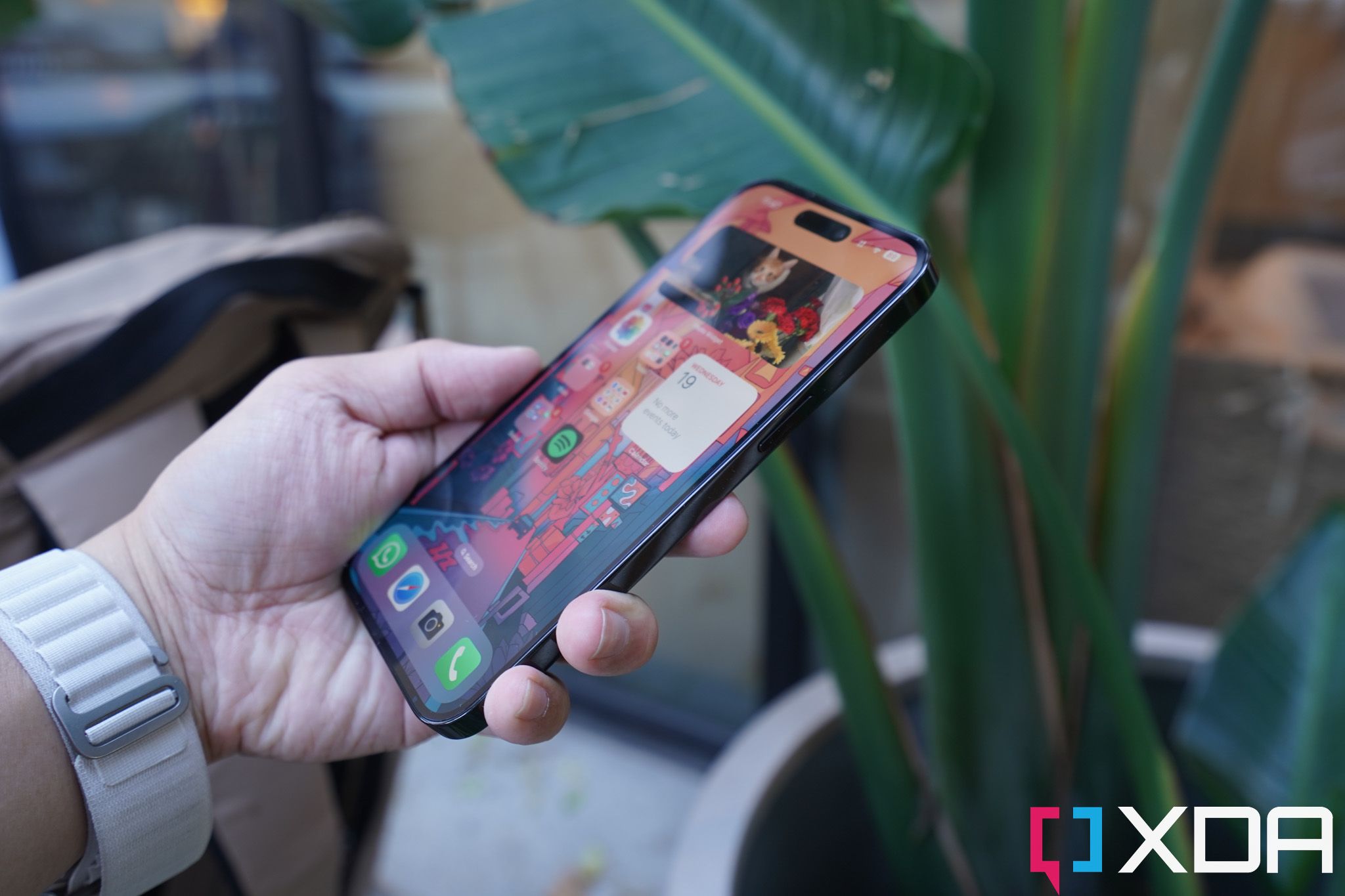Quick Links
The Samsung Galaxy S23 has arrived, packing upgraded internals in a familiar chassis. Meanwhile, on the dark side, we've got Apple's iPhone 14 Pro, which features upgraded cameras and display. Both phones are excellent and, naturally, have their strengths and weaknesses. As a result, picking one to buy can be tricky. But worry not, we're about to break them both down to help you make the right purchase. This is the Samsung Galaxy S23 vs Apple iPhone 14 Pro: The battle between two of the best phones available on the market.
-
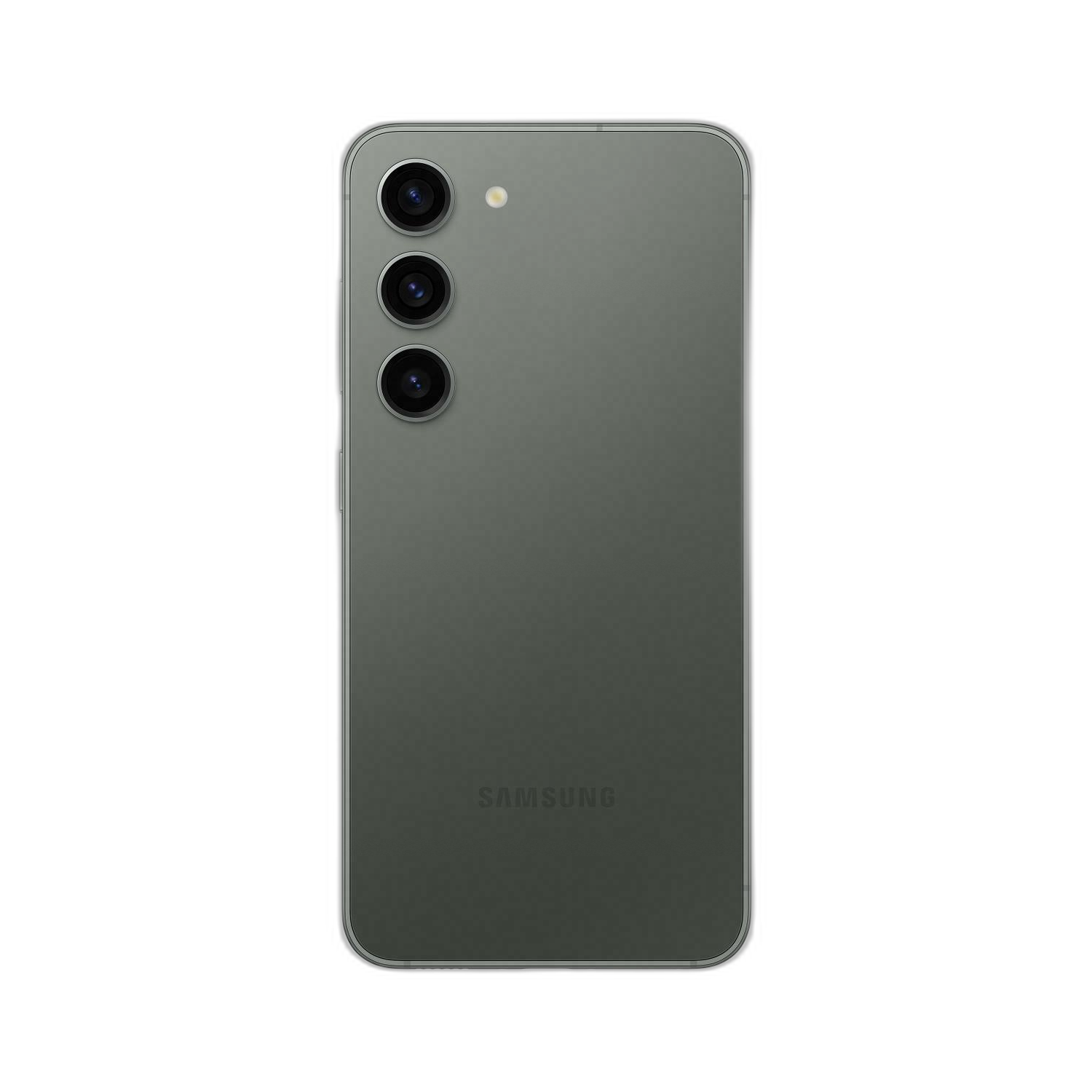
Samsung Galaxy S23
The regular Galaxy S23 is a great option if you're in the market for a smaller smartphone thanks to its 6.1-inch display. But despite the size, it's not lacking any features that the larger S23+ has. It has a 120Hz AMOLED display, a 50MP camera, and more.
-
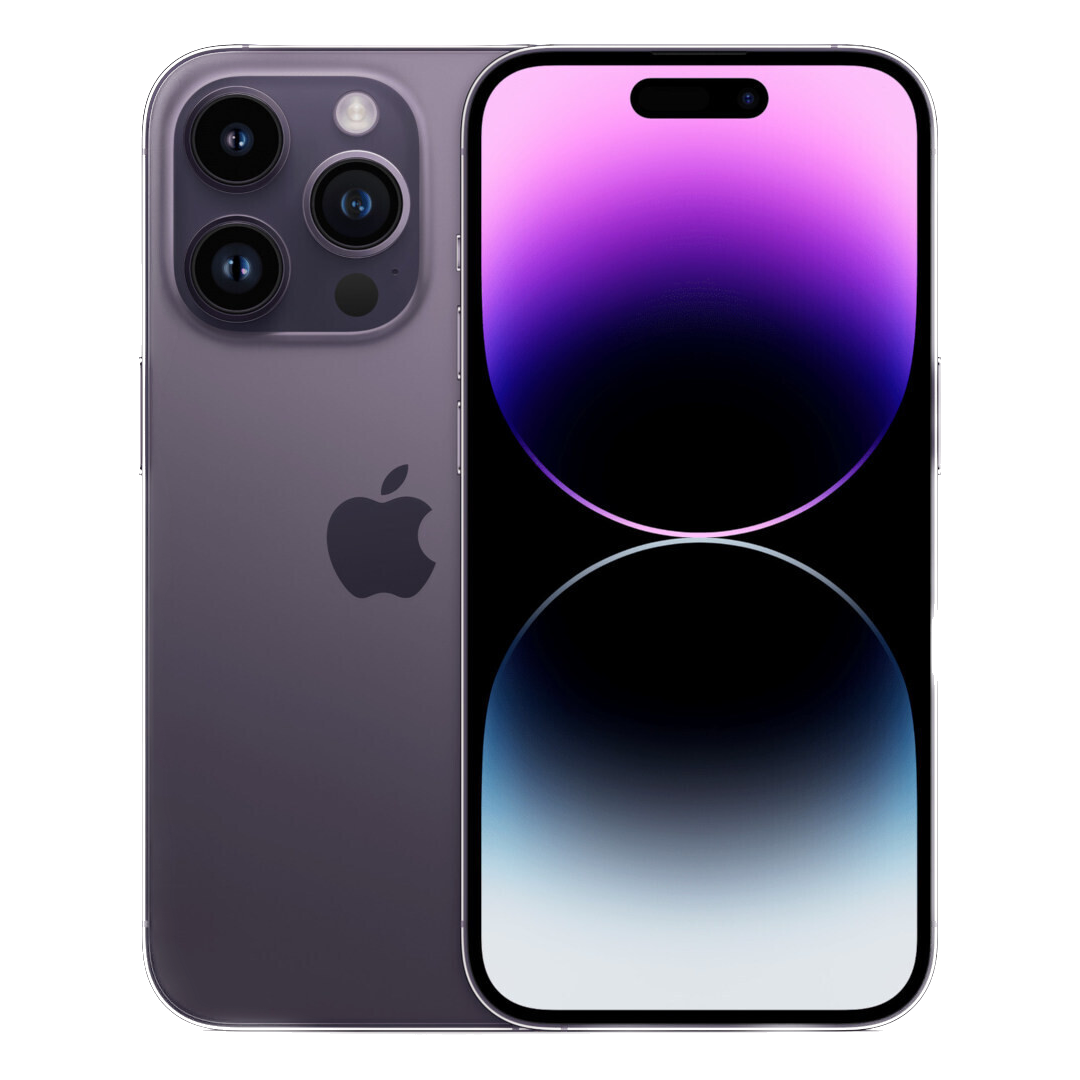
Apple iPhone 14 Pro
The iPhone 14 Pro brings a new front design, upgraded cameras, and all-powerful Apple silicon for 2022's premium Apple phone.
Pricing and availability
The Samsung Galaxy S23 and Apple iPhone 14 Pro are both available to purchase through their respective manufacturers' online stores, in addition to most major U.S. retailers, like Amazon. The former is available in Phantom Black, Cream, Green, and Lavender starting at $799, while the latter comes in Space Black, Deep Purple, Silver, and Gold finishes with a $999 base price. Unsurprisingly, opting for higher-end configurations will cost you extra, regardless of the phone you pick.
Galaxy S23 vs iPhone 14 Pro: Specifications
|
Specification |
Samsung Galaxy S23 |
Apple iPhone 14 Pro |
|
Build |
|
|
|
Dimensions & Weight |
|
|
|
Display |
|
|
|
SoC |
|
|
|
Storage |
|
|
|
Battery & Charging |
|
|
|
Security |
|
|
|
Rear Camera(s) |
|
|
|
Front Camera(s) |
|
|
|
Port(s) |
|
|
|
Connectivity |
|
|
|
Software |
|
|
|
Finishes |
|
|
Design
Design is an important element to look into before buying a new device. After all, it's the first thing we notice when picking up the product. Fortunately, both devices look modern and clean, so there won't be picking a winner for this round. Instead, we will make near-objective observations to help you decide which one matches your taste.
Starting with the Galaxy S23, you get a plain back with a vertical assortment of the three rear cameras towards the top left corner. At the bottom, you get the Samsung logo, and you can pick between four different colors. The device is made from aluminum and glass, making it both light and premium-looking, yet, like other glass phones, prone to cracking. So, be sure to check out the excellent Galaxy S23 cases to keep your phone looking fresh.
Moving on to the iPhone 14 Pro, you also get three rear camera lenses towards the top left, but their arrangement doesn't match that of Samsung. Similarly, you get an Apple logo on the back, except that it's centered in the iPhone's case. The company offers four finishes to pick from, as well. However, the body is built from glass and stainless steel rather than aluminum. While this makes it look luxurious, the mid-frame is a fingerprint and scratch magnet that will look hideous within hours of use without a case, and there are plenty of great iPhone 14 Pro cases available.
Both the Samsung Galaxy S23 and Apple iPhone 14 Pro offer IP68 dust and water resistance. They also share the approximate dimensions and can be considered middle-sized smartphones. Notably, though, the iPhone weighs significantly more due to its heavier stainless steel build.
Galaxy S23 vs iPhone 14 Pro: Display
Moving on to the display, another essential aspect to consider when picking a smartphone. Ultimately, we spend most of the use time interacting with the screens of our phones. Fortunately, both displays are excellent, but the iPhone 14 Pro wins over the Galaxy S23 in this round for the reasons stated below.
Starting with the Galaxy S23, you get a 6.1-inch FHD+ AMOLED 2X display with a front camera cutout. It has a pixel density of 425ppi, adaptive refresh rates that go up to 120Hz, and 1,750-nit peak brightness. It pretty much has all the specifications and technologies you would expect from a flagship display in this era.
Meanwhile, the Apple iPhone 14 Pro also offers a 6.1-inch OLED display. However, the front camera cutout isn't quite the same due to the TrueDepth camera's sensors. So instead of a simple punch-hole, you get a pill-shaped cutout called the Dynamic Island, which offers timely information and access to certain controls. As for the pixel density, you get a superior 460ppi, while the peak brightness also dominates over Samsung's due to its higher 2,000-nit value. The iPhone 14 Pro similarly has adaptive refresh rates that reach 120Hz. And both phones support the Always-On display technology.
Performance
Today, performance tests aren't as relevant in the flagship phone department, as pretty much all releases are powerful enough to handle most users' phone needs. Despite that, we will look at benchmarks to see how the Qualcomm Snapdragon 8 Gen 2 and Apple A16 Bionic perform.
According to the numbers, Apple's chip dominates in the single-core and multi-core performance tests, power efficiency tests, and overall scores. Meanwhile, the Snapdragon 8 Gen 2 scores similarly in GPU tests. In spite of the iPhone 14 Pro's A16 Bionic winning over the Galaxy S23's chip, this round shouldn't be a high priority when making a purchasing decision. After all, the performance differences are relatively minor, and you likely won't be able to tell the difference.
More importantly, though, the iPhone 14 Pro supports up to 1TB of SSD, while the Galaxy S23 maxes out at 256GB. So if you need more than 256GB of local storage, you have no choice but to buy the iPhone. Ultimately, this round is a win for Apple.
Galaxy S23 vs iPhone 14 Pro: Camera
The camera systems on today's smartphones matter a lot. After all, most of us no longer carry around dedicated digital or professional cameras to document our everyday moments. This round is arguably a tie, especially when it comes to the rear-facing cameras since both phones offer similar lenses.
Starting with the Galaxy S23, you get a Pro-style rear camera system featuring wide, ultra-wide, and telephoto lenses. Their specifications almost match those of the iPhone 14 Pro, as the spec table above reveals. However, the Samsung phone is capable of taking better nighttime sky shots, where the stars and moon look clearer when compared to the iPhone 14 Pro's output. In general, the Samsung phone has better zoom functionality, while the iPhone still struggles in this department.
Despite the iPhone 14 Pro's zoom shortcomings, it actually performs excellently in the video department, where you get to utilize Cinematic mode for professional-looking footage, Action mode for shaky setups, and more. While the Galaxy S23 is also great for video, it's not as advanced as Apple's flagship in this field. That's not to mention that the Galaxy phone doesn't include a LiDAR Scanner for 3D spatial awareness, which the iPhone has.
Moving on to the front-facing camera, you get 12MP lenses on both devices. However, Apple's iPhone 14 Pro packs a TrueDepth system, which includes a dot projector and an IR camera. This enables the phone to 3D-map your face and utilize Face ID for authentication, even when you're in pitch-black environments. Meanwhile, the Galaxy S23 offers a fingerprint scanner and traditional facial recognition through the front camera.
Battery
With both phones lasting a full day on a single charge, let's look into their charging technologies. This round is a win for the Galaxy S23 since Samsung has included some upgraded hardware that remains absent on Apple's iPhone 14 Pro. Starting with the ports, the Samsung phone packs the superior, universally-adopted USB Type-C, while the iPhone 14 Pro has the ancient, decade-old Lightning port.
The Samsung phone supports faster charging speeds when it comes to wired connections, while both phones can charge at up to 15W wirelessly. To utilize the 15W charging on the iPhone though, you would need a compatible MagSafe charger since regular Qi pads max out at 7.5W on this iPhone. More importantly, though, the Galaxy S23 supports reverse wireless charging. This allows you to charge supported, Qi-enabled devices through the actual phone. So you can charge your compatible smartwatch like the excellent Galaxy Watch 5 or earbuds via the Galaxy S23 on the go. This feature is still missing on all iPhone models, at least as of early 2023.
Galaxy S23 vs iPhone 14 Pro: Which should you buy?
As our detailed comparison shows, both the Galaxy S23 and iPhone 14 Pro have their own pros and cons. In terms of design and cameras, the two phones arguably have the same to offer. If you're looking for a superior display or performance, then the iPhone 14 Pro wins this battle. If you're looking for a better battery charging experience, then the crown would go for the Galaxy S23. Though, don't forget to take the operating systems into consideration, too. The Samsung phone runs a skinned Android version, while the Apple iPhone runs iOS. If you're tied into certain ecosystems or have specific OS preferences, then you're limited to the respective device. Notably, the Samsung Galaxy S23 starts at $799, while the Apple iPhone 14 Pro goes for $999. So if you're looking for a cheaper phone, the Galaxy S23 is the one to pick.
-

Samsung Galaxy S23
The regular Galaxy S23 is a great option if you're in the market for a smaller smartphone thanks to its 6.1-inch display. But despite the size, it's not lacking any features that the larger S23+ has. It has a 120Hz AMOLED display, a 50MP camera, and more.
-

Apple iPhone 14 Pro
The iPhone 14 Pro brings a new front design, upgraded cameras, and all-powerful Apple silicon for 2022's premium Apple phone.

